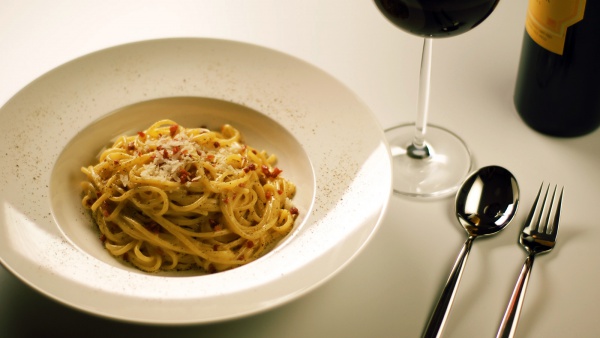Facts About Carbonara
Carbonara is a classic Italian pasta dish originating from Rome. Simple yet delectable, it is crafted with just a handful of key ingredients: eggs, hard cheese, cured pork, and black pepper. The dish, as we recognize it today, came together in the mid-20th century.
When it comes to cheese, Pecorino Romano or Parmigiano-Reggiano are the staples. Spaghetti is the traditional pasta for carbonara, though you can opt for other types if you prefer. For the meat, guanciale (cured pork cheek) or pancetta are the traditional choices, but smoked bacon can serve as a substitute.
The exact origins of carbonara are somewhat obscure, but it is widely believed to have originated in the Lazio region around Rome. It belongs to a family of pasta dishes that include bacon, cheese, and pepper, similar to "pasta alla gricia" and "pasta cacio e uova." The name "carbonara" is considered a relatively recent addition, with some theories linking it to Italian charcoal workers or the Carbonari secret society.
Making carbonara is straightforward. You cook the pasta, fry the guanciale, and then mix raw eggs, cheese, and pepper with the hot pasta to create a creamy sauce. While guanciale is the most common meat used in Italy, pancetta or bacon are more frequently used elsewhere.
There are numerous variations on the traditional recipe. Some people use different pasta shapes, add cream, garlic, or even incorporate vegetables or different meats. You can also find commercial carbonara sauces in stores, but these often deviate from tradition, using cream to thicken the sauce and bacon instead of guanciale.
Over time, carbonara has evolved, with adaptations and variations appearing both in Italy and around the world. However, regardless of how you make it, the essence of carbonara remains the same: a simple, comforting dish that's hard to resist.

 Switzerland
Switzerland